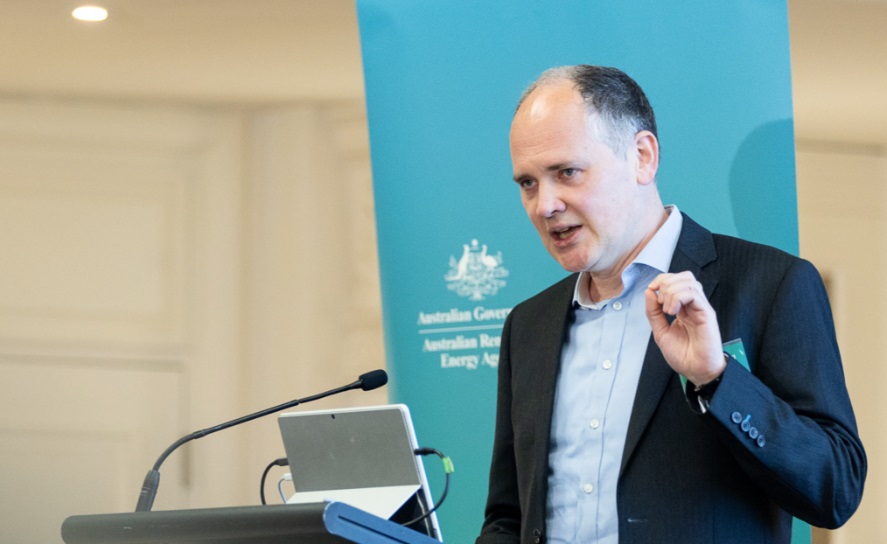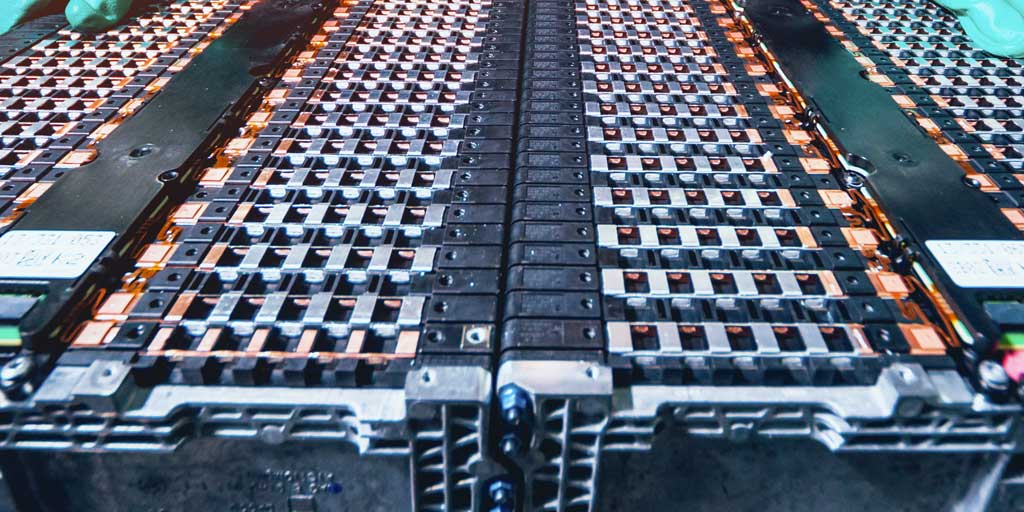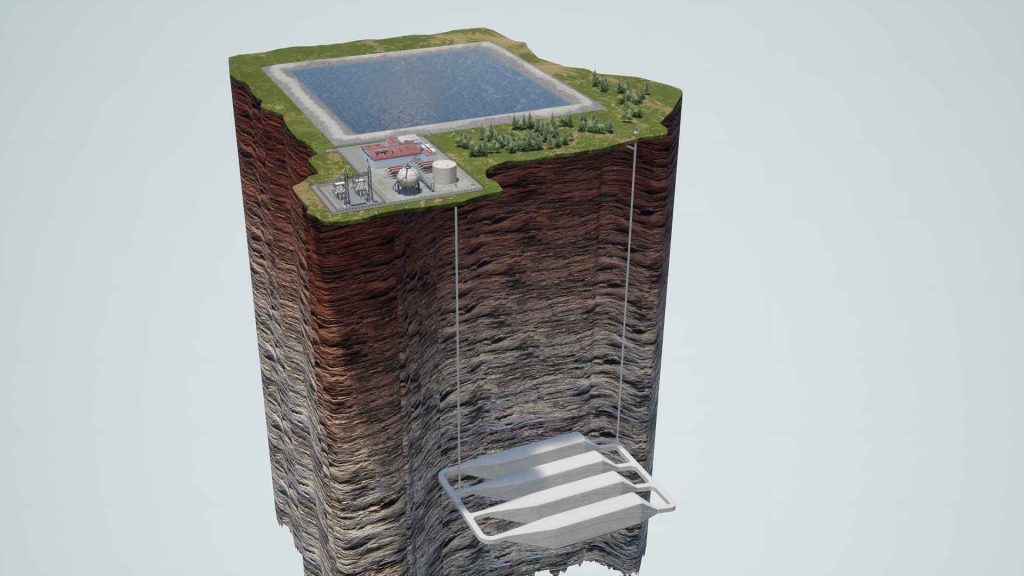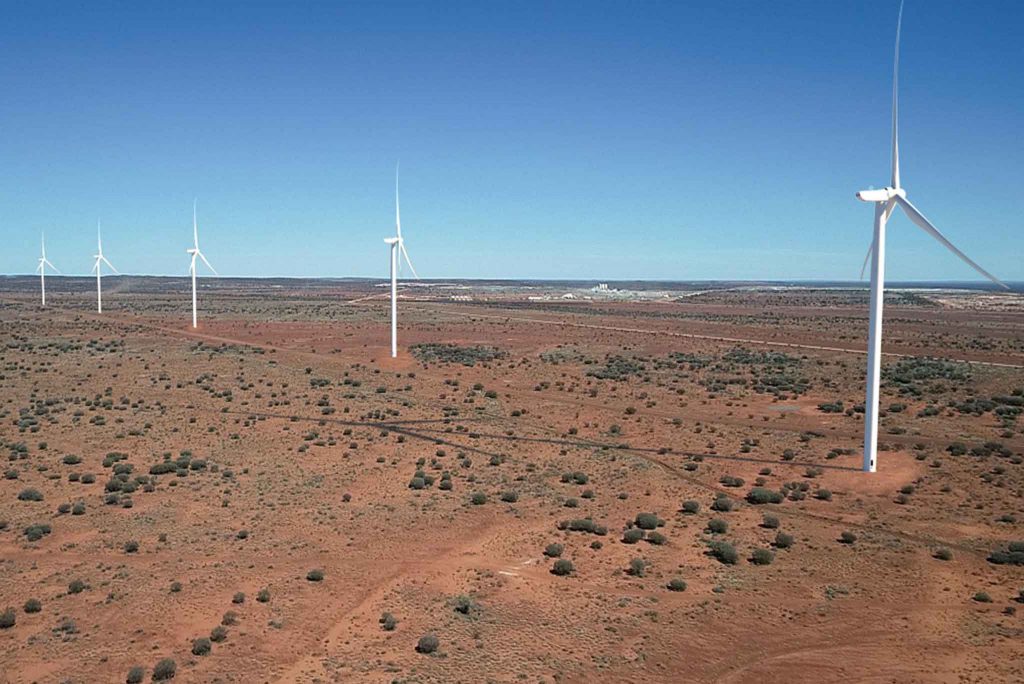Long-duration Energy Storage and Australia’s Net Zero Ambitions
Alex Campbell tells us why long duration energy storage is an important foundation to Australia’s clean energy transition.

Australia is working towards a national energy market (NEM) that sources its electricity from clean, renewable energy instead of emission-heavy processes that have dominated for decades. It’s a tectonic shift – one that requires extensive thought, effort and time.
It’s not just a matter of plugging in a couple of solar panels and moving forward, it’s a monumental leap in changing how we generate clean energy and distribute it within the consumer, industry and transport spaces. This means Australia will need to undergo massive infrastructural changes to reach our decarbonisation goals by 2050.
One challenge is energy storage, which is proving critical to our energy needs in a fully renewable space.
We need the right technology to store enough renewable energy to meet our NEM needs, so we don’t have to default to fossil fuel electricity production to fill the gap. A potential solution to this problem is long duration energy storage (LDES).
What’s the Problem?
In a net zero future, reports show most of our energy needs would need to be met by variable renewable energy (VRE). In Australia, this will be a mix between solar and wind generated electricity. Current forecasts from the CSIRO and the Australian Energy Market Operator (AEMO) indicate that as much as 95% of the NEM would need to come from VRE to meet our emission reduction goals by 2050.
Alex Campbell, the Director of Policy and Partnerships for the Long Duration Energy Storage Council (LDES Council), said, “There’s a German expression, dunkelflaute, meaning a wind and solar drought. So, if you are relying on wind, then you need probably slightly deeper storage, longer storage,” and “solar is much more predictable…but the basic principle is there.”
To put it simply, the sun doesn’t always shine, and the wind doesn’t always blow. So, what would happen if more than 90% of our electricity comes from these intermittent sources and they aren’t producing energy? It could potentially mean Australia would need to keep carbon-heavy technologies to provide stable energy to support VRE.
Current LDES technology is a potential solution for Australia’s clean energy transition because of its ability to discharge energy continuously for eight hours or longer. This allows the technology to store energy and save it for times when grid demand would not be met by VRE.
“Once you get up into the high levels of solar and wind on the grid, then you really do need that long duration to provide resilience and to keep the lights on in very simple terms.”

Campbell went on and said about the international goal to decarbonise, “if we don’t deploy LDES, we are not going to be able to have truly low emission, net zero electricity systems,” and “we need to get these technologies up and running to make sure we can do the energy transition.”
In the case of Australia, the country is currently looking at a mixture of energy storage approaches, coupled with LDES in the long-term to bring the stability the country would need in a renewable energy dominated NEM.
A report from the Clean Energy Council (CEC) released in June 2024, titled The Future of Long Duration Energy Storage, noted that lithium-ion batteries (LIB) and pumped hydrogen energy storage (PHES) are currently the dominant energy storage systems for renewables in Australia. The CEC said emerging LDES technologies coupled with the energy storage systems in place, would be the best suite to appropriately manage Australia’s needs.
Understanding energy storage needs
In March this year, the ARENA held an Insights Forum which covered energy storage and technologies that can bring system security to the grid.
ARENA also partially funded a report from the CSIRO titled Renewable Energy Storage Roadmap to better understand the challenge. Released in March 2023, the roadmap found our energy storage needs will increase by 10 to 14-fold in a net zero future.
This sentiment was echoed in the Australian Energy Market Operator’s (AEMO) latest 2024 Integrated System Plan (ISP), which stated that storage capacity would need to increase from 3 GW today to 49 GW by 2050.
The CEC report found that the use of LDES is “rapidly emerging as effective and complementary to reinforcing these established types of energy storage,” in Australia. It also noted how employing the technology could “bring down the total cost of the transition while also reducing environmental and social impacts.”

Types of LDES technology
The four types of LDES technologies are:
- Mechanical – Stores potential energy by tension (like compressing air or gas) or gravity-based (like storing water at the top of a hill ready to flow down through the turbine)
- Chemical – Stores energy found within chemical bonds and then uses the stored energy to power a gas turbine or fuel cell
- Electrochemical – Stores energy from chemical reactions and includes static batteries, flow batteries, metal (iron) air batteries, and other battery chemistries
- Thermal – Thermal energy storage (TES) systems can store energy as heat or cold to be used later, under varying conditions in temperature, place or power.
Although not a comprehensive list and detail of LDES technologies, these can all be used to store energy created from renewables and implemented across Australia’s infrastructure.
It should also be noted that over time, many LDES technologies don’t degrade as fast as LIB. They are capable of cycling repeatedly with low rates of degradation and won’t need to be replaced as much as LIB would, the CEC report said.
What are the current challenges?
According to Campbell, countries looking to decarbonise would need their grids “to be upgraded everywhere,” with LDES technologies to secure a clean energy transition.
The CEC report, when speaking about Australia, noted the following issues facing widespread adoption of LDES in the country.
- Currently there are few financial support measures available to incentivise investments in longer duration energy storage, especially many of the forms of LDES explored in this report
- Government underwriting schemes, particularly the CIS, do not appear likely to support substantial investment in LDES or longer duration storage more generally
- The NEM market is not designed to incentivise investment in LDES or longer duration energy storage generally
- While ancillary service markets may offer some incentives for LDES, more work is needed to ensure these frameworks are working effectively.
Campbell believes Australia must focus on three basic recommendations to begin the work to bring LDES technology into the NEM infrastructure.
- Assess your flexibility needs as you’re moving towards wind and solar-dominated electricity grids. What is the mix that you’re aiming for?
- Set a target. What is your target for different flexibility options? How much are you going to need and when are you going to need it?”
- What mechanisms are in place to incentivise people to build the assets that will meet your targets?

ARENA’s work with LDES
One of ARENA’s strategic priorities is helping get LDES technologies to commercial stage for widespread adoption across the NEM. The key is making the technology economically and technologically viable to meet Australia’s growing energy storage needs.
In October 2022, ARENA announced it had conditionally approved $45 million to Hydrostor to build a 200 MW LDES compressed-air technology project in Broken Hill.
Recently, ARENA supplied $2.85 million to Horizon Power for two electrochemical LDES technologies to be installed in remote microgrids through the Regional Microgrids Program. The project is in Western Australia at Carnarvon and Nullagine. It began in December 2023 and has an expected completion date of 30 June 2027.
ARENA also funded The Spencer Energy Project that began in 2020 and was commissioned in early 2024. It’s the first ever utility-scale flow battery connected to National Electricity Market.
RayGen was also given funding to build solar and thermal storage technology pilot in Carwarp in Victoria. Vast Solar also received funding in early 2023 to build a concentrated solar thermal power plant at Port Augusta, South Australia.
These are just a few of the amazing LDES projects funded by ARENA. They are all examples of the pivotal innovation required to ensure Australia can meet its energy storage needs on the road to net zero.

ARENA